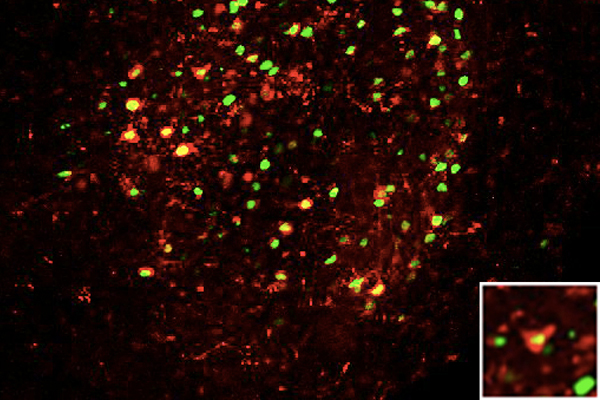
On April 11, 2014, a group of researchers at C-FRIEND (The Field Robotics Research Center) in KIDCS successfully demonstrated a collaborative team consisting of an unmanned aerial vehicle (UAV) and a self-driving car to create a fast and efficient delivery system. The Octo-USRG is an eight-rotor aerial vehicle with flight capabilities and a special payload handling system underneath to hold and release the package as needed. The self-driving car was built using a Hyundai Veloster Turbo to carry the aerial vehicle.
The idea of delivering a package using a drone is not a new one. Amazon recently demonstrated the concept in 2013, but this idea was contemplated even before that. FedEx, UPS, or other giant shipping companies have envisioned that drones can be a good platform for long-distance delivery especially where the road infrastructure is poor or simply too far for trucks to deliver just one package. In addition, the multi-rotor vehicles such as quadrotors, hexarotors, or octorotors have recently become the mainstream UAV platform due to their easy and reliable operation.
At first, one may wonder why these two vehicles need to operate together, but the reason is obvious: although the electrically-powered aerial vehicles have seen quantum leaps in endurance and power density using lithium-based electrolytes, they still fall short of the expectations of many. The battery is still heavy compared with traditional chemical-based fuels, which has the additional benefit of reducing weight as it burns away during the flight. Therefore, typical electrically-powered vehicles can only fly about ten to twenty minutes, which may be a sufficient time for hobbyists, but not for serious applications such as package delivery.
Therefore, the researchers at KAIST proposed to complement the short-range UAV with a long-range car. The car (a Hyundai Veloster Turbo) holds 50 liters of fuel, which is more than enough to travel from one end of Korea to the other. Furthermore, the car is autonomous, which complements the short-range UAV. So the following scenario is born: the car carries the drone as close as possible for delivery, and the drone undertakes the final leg to perform a fast and straight flight to complete delivery. Finally, the unmanned delivery team is summoned by a smartphone app. When the user chooses the item he or she wants, the delivery information, augmented with the user’s location, is sent to the drone and the drone automatically calculates the best trajectory.
The unmanned delivery team was unveiled to a group of students and reporters at KAIST for the Strawberry Festival, an annual event hosted by the KAIST student union. The goal was to help nearby farmers. This year, the autonomous car started with the drone holding a package filled with strawberries far from the festival location and parked close to the final delivery point. During this leg, the car drove by itself along a safe path while avoiding any obstacles. When the vehicle stopped, the drone was released to take off and then ascended to an altitude of 30 meters above the ground. It flew horizontally to a point directly above the landing spot. Finally, the vehicle started to descend while monitoring the altitude above the ground using its onboard laser ranger. Just before landing, the onboard computer cut off the power to the propellers and the drone touched down smoothly. The package was released from its holding claws before the drone made its way back to the vehicle.
This unmanned delivery team, combined with a smartphone app, is one of the first of its kind in the world and gathered great attention from the media. The timing was especially apt due to reports of mysterious drones that were believed to have been sent from North Korea. This event aimed to show peaceful uses of drones while heralding a new era of drones for everyday use. KI C-FRIEND is proud to play a pivotal role in creating a joint-ministry project for implementing infrastructure for unmanned aerial vehicles and ships for civil applications which will start from 2015 and continue until 2020.








